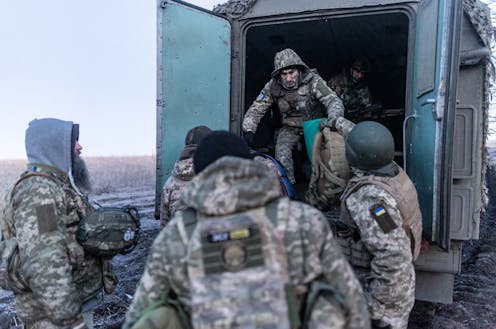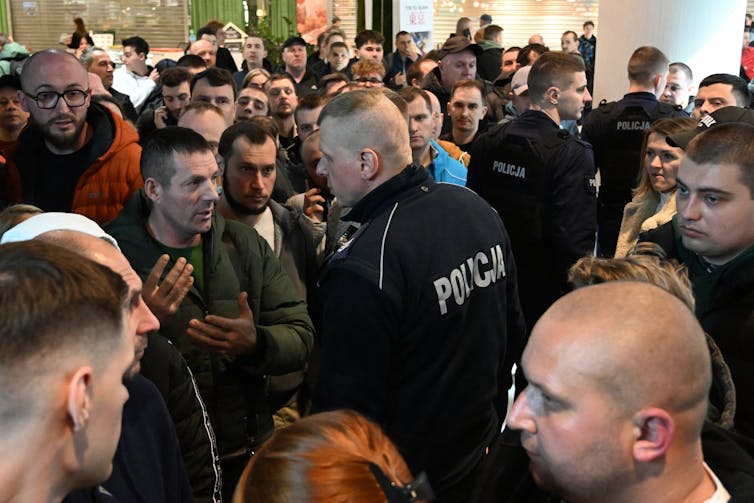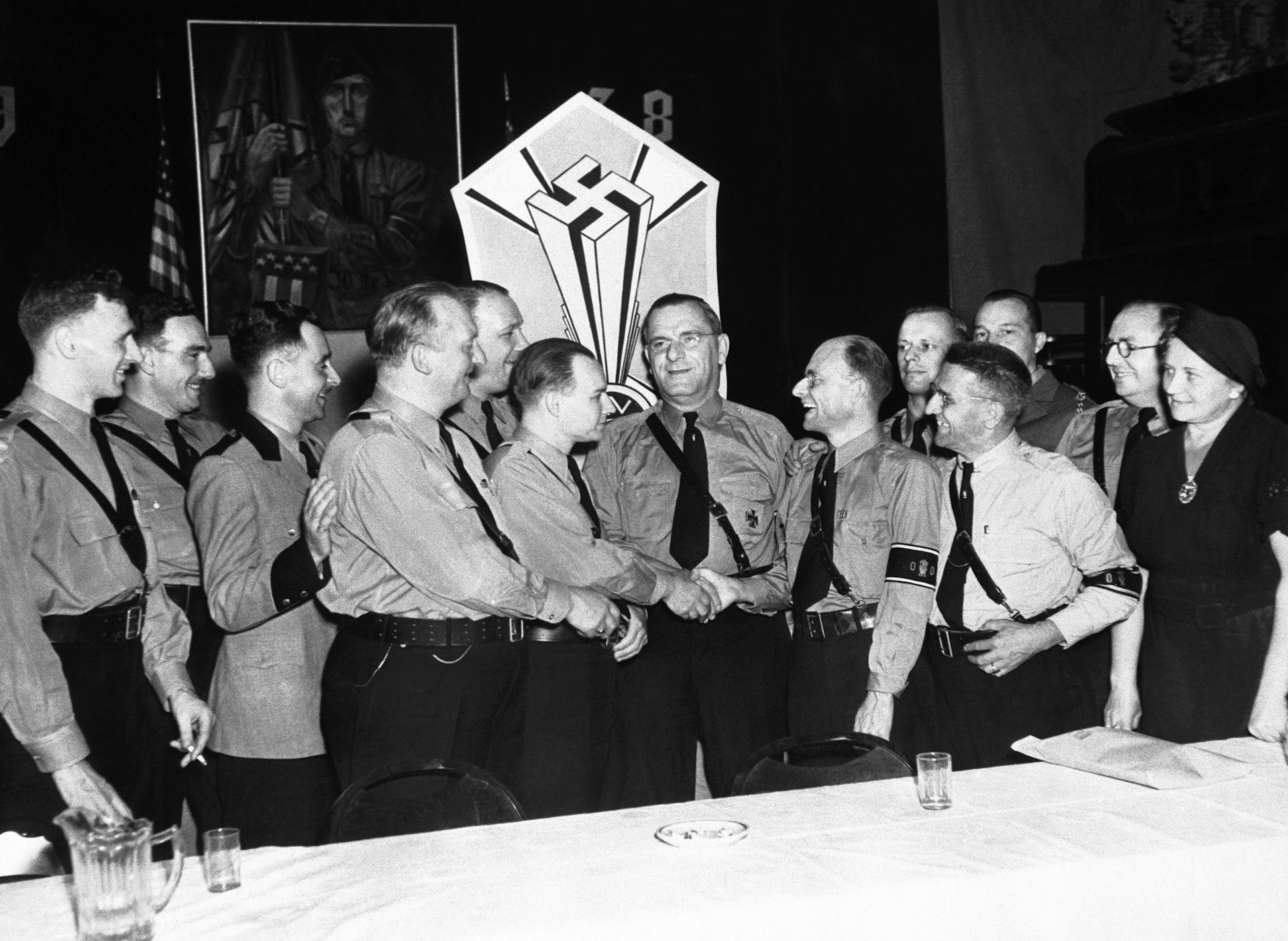Ukraine’s draft woes leave the West facing pressure to make up for the troop shortfall
Recruiters are struggling to find enough men to counter a Russian invasion that has gained momentum in recent months.

Ukraine’s current military recruitment campaign is not going according to plan.
Announced on April 16, 2024, the drive was aimed at enlisting hundreds of thousands of young Ukrainian men to help push back against a Russian invasion that has gained momentum in recent months.
But the effort has been met with public skepticism, draft dodging and opposition to unpopular, heavy-handed attempts to root out those not heeding the call to sign up. It has left Ukraine struggling to fill the positions officials say are needed to beat back the invading army.
Rather than solving Ukraine’s problems, the draft effort is multiplying them. And that puts pressure on the West’s current strategy to support Ukraine primarily through military aid. Moreover, I believe it risks the prospect of troops from NATO countries eventually being pulled into direct military confrontation with Russia.
Too few boots on the ground
After Russia’s invasion on Feb. 24, 2022, there was a wave of enthusiasm among Ukrainians for signing up to defend their country. But after Ukraine’s unsuccessful counteroffensive of 2023, recruiting for the war has become much more difficult.
At the end of March 2024, a nationwide poll asked Ukrainians how they thought their draft-age acquaintances might respond to a call to serve. Only 10% thought they would accept. Another nationwide poll taken at the time found only 8% willing to “take up arms” against the Russian invaders.
No one disputes Ukraine’s desperate need for more troops. In December 2023, when he was still commander in chief of the Ukrainian armed forces, General Valerii Zaluzhnyi told president Volodymyr Zelenskyy that he needed 450,000 to 500,000 more troops.
He also pointed out that the additional US$61 billion the United States was proposing to fund the war for another year was far too small. To transform this struggle into one that Ukraine could win, he said, would require more than five times that amount. He was dismissed soon thereafter.
Zaluzhnyi may well be right on both counts, but Ukraine’s most urgent problem right now is that it does not have enough troops.
A law approved in April – after being delayed for nearly a year – seeks to change this. It lowers the minimum draft age from 27 to 25, requires that all men aged 18 to 25 complete basic military service, and mandates that all military-age men currently abroad return to Ukraine to register.
In theory, this takes the total number of Ukrainian men eligible for mobilization to 3.7 million.
The number that actually enlist, however, is likely to be only a small fraction of this. One reason is demography: Fewer than 420,000 males born in Ukraine are today in the 25-27 age category.
And a significant portion of these may already be among the 800,000 Ukrainian men who have either left the country, are already serving in the military, are exempt or are deemed unfit for military service.

Those who have already left are the most unlikely to heed the call. While nearly a million people inside Ukraine have already renewed their military status online, only 11,000 – or 1.5% – of those living abroad have done so.
Despite optimism among Ukrainian politicians about sending as many as 20,000 convicts to the front lines – those who have committed no more than one murder, rape or other serious crime – the bottom line, according to analysts in the Ukrainian military’s general staff, is that, all told, these new recruitment efforts are likely to add no more than 100,000 new troops.
Growing resentment
By contrast, Russia has a population pool far larger than Ukraine’s, with four times the number of active military personnel and a quarter-million reservists.
It is also adding 30,000 new contract recruits every month. As one Ukrainian military expert cited by French newspaper Le Monde put it, even if the number of new Ukrainian recruits were twice what is expected, “it is not enough.”
Adding even these soldiers, however, comes with growing resentment over efforts to browbeat would-be recruits into compliance.
Those who do not comply with the demands of Ukraine’s Territorial Recruitment Centers can have their driver’s licenses suspended, as well as their credit cards and bank accounts frozen. Ukrainians residing abroad will be denied consular services, including passport renewal, if they fail to comply with registration demands within 60 days.
Meanwhile, the hunt for eligible men has seen recruitment officers hauling people in from off the street and from popular nightclubs and fitness centers. They have been backed up by police checking military IDs on routine traffic stops. Employers and even university faculty must gather and submit names of employees and students for registration.
Registered draft-age Ukrainian men must be able at all times to display their military registration information or face fines of up to two to three times the minimum monthly salary. As the Ukrainian media has pointed out, these penalties provide ample opportunity for bribery at each stage of the process.
Since the new draft law has come into force, public outrage has slowly grown to the point that, as Ukrainian political analyst Kost Bondarenko puts it, “the Territorial Recruitment Centers will be the main component of Ukraine’s defeat, if, God forbid, it should happen.”
NATO troops to the rescue?
Problems with the Ukrainian draft are underscoring a fact that many in the West have struggled to accept: That without massive new injections of foreign cash, weapons and troops, Ukraine is going to exhaust its resources long before Russia does.
While some Western analysts have been making this point for years, many politicians in the West have studiously ignored it. Now, an increasing number of them are coming to the conclusion that there is no other choice but to send in NATO troops to stave off Ukraine’s defeat.
While President Joe Biden has vowed repeatedly not to send U.S. troops to Ukraine, the Chairman of the Joint Chiefs of Staff, General Charles Q. Brown, Jr., has said that he considers some type of U.S. troop presence in Ukraine “inevitable.”
Meanwhile, more than one NATO country has suggested military deployment with or without the alliance’s blessing.
The situation on the battlefield, meanwhile, may have already deteriorated to the point that, even if NATO were to send in as many troops as Ukraine hopes to raise in the draft, it might still not be enough to turn the tide.
Is there an off-ramp?
Western politicians have warned that if Russia wins, the consequences would be catastrophic. This seemingly leaves no option but to support Ukraine for “as long as it takes” or “whatever the cost.”
But if that means NATO troop involvement, it risks drawing the United States into direct confrontation with Russia. Whether the U.S. personnel involved in Ukraine are advisers, technicians, trainers or combat forces makes no difference to Russia – they would be seen in Moscow as legitimate targets.
While Ukraine’s draft problems present NATO leaders with a conundrum, escalation isn’t the only option.
Ending the conflict in Ukraine through diplomacy is still a possibility – and Russia recently indicated that an aborted 2022 peace plan could still form the basis for negotiations.
At the time, Ukraine balked at signing that proposal – which would have seen the country remain neutral and ended its aspirations to join NATO, in exchange for other security guarantees. Today, however, Ukraine has more incentives than ever to negotiate for peace.
Nicolai N. Petro is also Senior Washington Fellow at the Institute for Peace and Diplomacy.
Read These Next
The US already faces a health care workforce shortage – immigration policy could make it worse
About 1 in 4 doctors practicing in the US were born abroad.
Unpaid caregiving work can feel small and personal, but that doesn’t take away its ethical value
Debating whether to step back from a career to take on caregiving responsibilities can be a tough decision…
America faced domestic fascists before and buried that history
Although thousands of Americans embraced fascist ideas during the interwar years, a new study examines…





